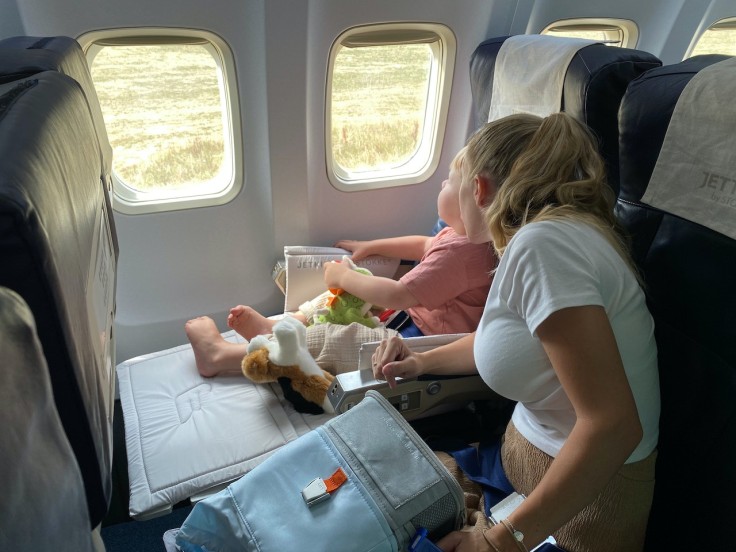
Flight attendant unions continue their fight against infants being carried on their parent's lap while flying instead of placing them on their own seats with a proper restraint device.
When a plane experiences turbulence, the seatbelt light blinks on, and every passenger is expected to buckle up except for one group of passengers called the lap-babies, or the infants below two years old seated on the lap of their parents the entire flight.
These "unrestrained" young ones sharing a seat with their parents remain to be exempted from the safety mandate, which has been an intensifying concern, especially with the recent incidents of severe turbulence.
"We've seen airplanes go through turbulence recently and drop 4,000 feet in a split second. The G-forces are not something even the most loving mother or father can guard against and hold their child. It's just physically impossible," the Association of Flight Attendants-CWA international president Sara Nelson emphasized with The Washington Post.
The Association of Flight Attendants-CWA (AFA-CWA) is the country's largest union of flight attendants, with nearly 50,000 members across 19 airlines. It has advocated for a change in the lap baby rules for the last 30 years, pressing that all airplane passengers, regardless of age, occupy their own seats with restraints.
The lap is not the safest place for infants
The AFA-CWA once again raised this issue at the Federal Aviation Administration Safety Summit in Northern Virginia Wednesday and has submitted its topics of priorities, including "a seat for every soul," to Congress. The same recommendations were submitted during the last round of the 2018 reauthorizations.
The guidelines on flying with children by the Federal Aviation Administration stressed that the "the safest place" for a child under the age of two in a US airplane is in an "approved child restraint system (CRS) or device" and not in a parent or adult's lap. However, thousands of young children fly with their parents annually, seated on their parent's lap, making it unsafe and life-threatening for each of them.
Under the current rules, domestic airlines, including American Airlines, allow kids under two years old to travel for free while seated "in the lap of their parent (any age), or any accompanying adult 16 years or older traveling in the same cabin."
Travel expert Sarah Dandashy expressed to Denver7 her surprise and concern that the regulations and rules around the Federal Aviation Administration's guidelines are still not in place today. She cannot help but stress about the rules families strictly follow on their own private vehicles, yet cannot follow when it comes to an airplane that has way above speed.
Who will pay the cost, if ever?
The union, with the National Transportation Safety Board (NTSB), further stated that it is "impossible" for any parent or adult to hold onto a child during severe turbulence.
According to Nelson, the tragedy that "haunts" her is the United Flight 232 crash landing in Sioux City, Iowa, in 1989, where flight attendants, following protocol, instructed parents to wrap their unbuckled lap babies in blankets and place these babies on the floor. After the incident, one died, while three of the babies suffered severe injuries.
In 1994, a girl seated on her mother's lap was killed in a USAir crash in Charlotte. Just recently, last December, to be specific, one of the flights of Hawaiian Airlines injured 36 passengers, including a 14-month-old infant.
Nelson cannot help but stress that kids must have their own seats on the airplane with a proper restraint device to ensure that incidents and deaths like these would "never" happen again.
Ben Hoffman, the president-elect of the American Academy of Pediatrics, proclaimed that the "safest possible thing" is for every passenger to be restrained.
However, a big question surfaced with all that being pushed, especially for parents and consumers - who will pay for the infants' seats? Will the cost be placed under the parents or the airlines? Questions Dandashy would like to have an answer soon.
Congress is reviewing federal aviation rules and legislation to craft an FAA reauthorization bill by the end of September, funded until the end of the fiscal year 2023, ABC 7 News reported.